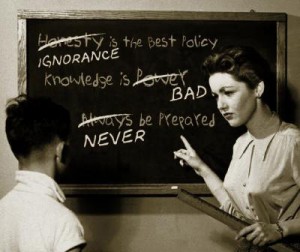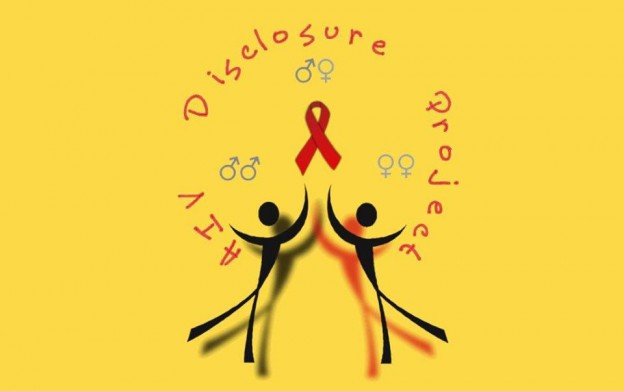We give the low down on public sex education debates hitting headlines the past 6 months. There’s been a lot of coverage. Some jaw-drop appalling. Some inspiring. It was difficult to limit ourselves to 10! This year has seen a lot of students standing up for their rights to access of medically accurate, relevant sexual health knowledge.
1) Two Alabama high school students launch a petition to repeal a state law which requires public sex education to teach students that homosexuality is criminal. The Supreme Court has ruled that same-sex sodomy laws are illegal, but that has not stopped the message from being enforced in sex education. “Telling students that being gay is a crime is not only wrong, it’s unconstitutional according to our nation’s highest court”, states the petition. To date, it’s received 93, 836 supporters, over half the required signatures.
2) Similarly, in Tennessee, 11 year old Marcel speaks out against the so-called “Don’t Say Gay” bill which seeks to prohibits teachers from discussing homosexuality in K- through Grade 8. He is also standing up against R-John Ragan who previously compared homosexuality to pedophilia and prostitution. Marcel calls on the lobby group, StudentsFirst, to take back its award to R-John Ragan, whom they recently named “Educational Reformer of the Year.” Check out Marcel’s petition and watch the short version of his story found on LGBTQNation.com
3) With this spring’s Steubenville rape trail and the recurrent use of “rape culture”, what better time to push a petition to make “enthusiastic consent” a mandatory part of public sex education nationwide. Unfortunately the petition did not receive enough signatures in time and expired. We learned about this campaign from a self-identified bisexual high schooler who criticizes her sex education on Our Bodies Our Blog.
4) Politically and religiously motivated guest speakers were caught on tape giving false sexual and reproductive health info at a high school assembly. In the hour long lecture, two representatives from an anti-abortion organization preached scare tactics to students. For example, they said that “condoms have a failure rate of about 14%”, that there’s a new STD spreading that is “deadlier and faster than AIDS”, that as the rate of “STDs goes up the rate of fertility goes up” and that “all medical textbooks say that life begins at conception”. They also gave sexist information about male and female sexuality explaining that girls in particular need to be careful about sex because they are predisposed to be hormonally and emotionally “bonded” to whoever they are sexually active with. News about the misinformation taught at abstinence-only assemblies are coming to light only because high school students are speaking out. You can listen to the inflammatory rhetoric from a shorter version of lecture provided by TheTennessean.com.
5) Katelyn Campbell made big waves in April when she refused to attend an abstinence-only assembly calling the presentation “slut-shaming”. Funded by a conservative religious organization called “Believe in West Virginia” and advertised with fliers that proclaimed “God’s plan for sexual purity”, lecturer Pam Stenzel allegedly told students that “if you take birth control, your mother probably hates you” reports ThinkProgresss.org. In response to her protest, the school principal threaten Katelyn’s academic career. But this has only led to more support for Katelyn’s cause inspiring strangers from across North America to fight for comprehensive sex ed. There is now a facebook page Friends of Katelyn Campbell.
You can watch YouTube lectures by Pam Stenzel and her outlandish sex health bullshit.
6) In May, Elizabeth Smart, a kidnap and rape survivor, received serious backlash after criticizing abstinence-only sex education. Smart stated that abstinence-only sex ed did not equip her the self-worth that she needed; instead it contributed to her sense of worthless and filth after being repeatedly raped. Abstinence-only proponents disapproved of her criticism by saying that she was speaking irresponsibly and even questioned the extent of her abuse. Calah Alexander (@calahalexander) writes a poignant piece against the backlash on Patheos.com. She writes,
No one showed even a hint of sympathy for how [Elizabeth Smart] had suffered, not only at the hands of her captors, but at the hands of a degrading philosophy of human sexuality. Such a callous indifference to human suffering is appalling. It shows that too many Christians, too many proponents of abstinence-only education, have put their concern for the welfare of a quasi-political movement above their concern for the welfare of a human being, of human dignity itself.”
7) In other backlash news, the anti-abortion bills that swept over the US during the beginning of 2013 have also impacted sex education. In April, Kansas law determined that life begins “at fertilization”. This bill prohibits any agents connected to abortion providers – including Planned Parenthood – from providing any information on human sexuality to students in public schools.

8) Sex Week is becoming an actual thing to kick off Spring semester across North America. The lineup varies across campuses including lectures on how to masturbate, how to use condoms, the concept of virginity, contraceptive choices, what it means to be transgender, and how to stop sexual violence—topics that many college students, despite being age 18 and over—never learned about in high school. But 2013 proved a tough year as administrators stalled sex talk events, cut funding, and banned the distribution of free condoms on campus. Cosmopolitan explains more.
9) What exactly does “comprehensive” mean in sex education? Jess Kiley @Jessthefeminist nails it on the head. Providing examples of some outlandish laws passed this year, she makes a strong argument on Feminspire.com for why sex education has failed and sustained homophobia, transphobia and sexism.
10) Ending on a happy note, Illinois has made great strides this year. In January, they enacted a law that requires sex ed to focus on sexual abuse and consent. The state also banned abstinence-only sex ed and put in place new requirements that education must be medically accurate.
For more information on trends sweeping sex education policy across US states check out the Guttmacher Institute, an independent nonprofit research institute that works to provide sexual and reproductive health and rights in the United States and worldwide.
What do you think should be added to this year’s list of public sex education in the news? Share a cause or petition with us.






 A recent
A recent